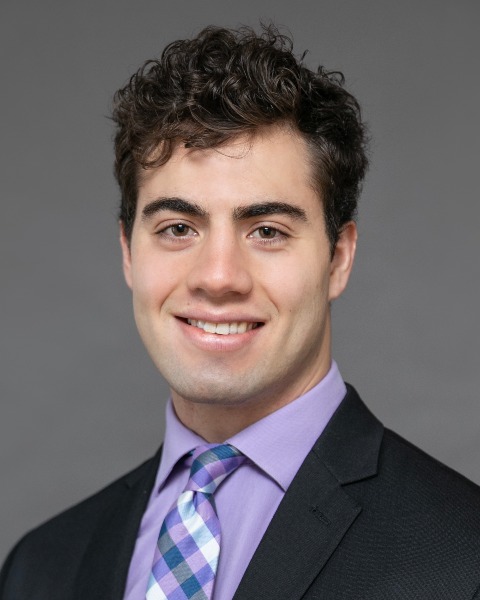Degenerative
The Impact of Foraminotomy on Patient-Reported Outcomes Following 3+ Level PCDF for Myeloradiculopathy
Friday, February 21, 2025
7:00 AM - 2:00 AM EST

Robert J. Oris
Research Fellow
Rothman Orthopaedics
Rothman Orthopaedic Institute
Presenting Author(s)
Introduction: The aging US population is expected to increase the prevalence of cervical degenerative disease, including myelopathy. To address cervical myelopathy, posterior cervical decompression and fusion (PCDF) decompresses the central canal and provides stability. However, isolated PCDF may not adequately address concomitant radiculopathy due to neural foraminal compression. In the setting of cervical myeloradiculopathy, posterior approaches must address both sources of compression. Despite this, it is unclear if multi-level PCDF in the absence of intentional foraminotomy provides adequate indirect foraminal decompression. Therefore, the objective of this study was to evaluate whether patients with myeloradiculopathy experience better improvement in patient-reported outcomes (PROs) from the addition of foraminotomy in the setting of PCDF.
Methods: Adult patients who underwent 3+ level PCDF between 2017-2022 for myelopathy, had at least one complete 1-year PRO measure, and had preoperative documentation of arm pain, numbness, or weakness suggesting radiculopathy were included. Patients were classified as having a foraminotomy for foraminal decompression based on documentation in the op note. Patients who had a small foraminotomy only for the purpose of identifying the pedicle or relevant anatomy, rather than for foraminal decompression, were placed in the “No” group. Groups were compared based on baseline patient and surgical variables, surgical outcomes, and PROs at baseline and 1 year postoperatively.
Results: A total of 36 patients had a foraminotomy while 71 did not. Age, sex, BMI, CCI, smoking status, race, and number of levels fused were similar between groups. Groups were similar regarding operating room time, cut-to-close time, length of stay, estimated blood loss, readmissions, or discharge disposition. Modified Japanese Orthopedic Association (mJOA), SF-12 PCS and MCS, NDI, and VAS neck scores were similar between groups. The foraminotomy group experienced higher baseline (5.56±2.63 vs. 4.00±2.69, p=0.015) and greater improvement in VAS arm scores (-2.99±3.22 vs. -1.25±3.06, p=0.035).
Conclusion : Patients who had a foraminotomy experienced greater improvement in arm pain at 1-year follow-up without an increase in surgical time, hospital stay, or complications. The present study suggests that, for the appropriately selected patient with myeloradiculopathy undergoing multi-level PCDF, performing intentional foraminal decompression leads to improved outcomes without altering surgical morbidity or in-hospital resource utilization.
Methods: Adult patients who underwent 3+ level PCDF between 2017-2022 for myelopathy, had at least one complete 1-year PRO measure, and had preoperative documentation of arm pain, numbness, or weakness suggesting radiculopathy were included. Patients were classified as having a foraminotomy for foraminal decompression based on documentation in the op note. Patients who had a small foraminotomy only for the purpose of identifying the pedicle or relevant anatomy, rather than for foraminal decompression, were placed in the “No” group. Groups were compared based on baseline patient and surgical variables, surgical outcomes, and PROs at baseline and 1 year postoperatively.
Results: A total of 36 patients had a foraminotomy while 71 did not. Age, sex, BMI, CCI, smoking status, race, and number of levels fused were similar between groups. Groups were similar regarding operating room time, cut-to-close time, length of stay, estimated blood loss, readmissions, or discharge disposition. Modified Japanese Orthopedic Association (mJOA), SF-12 PCS and MCS, NDI, and VAS neck scores were similar between groups. The foraminotomy group experienced higher baseline (5.56±2.63 vs. 4.00±2.69, p=0.015) and greater improvement in VAS arm scores (-2.99±3.22 vs. -1.25±3.06, p=0.035).
Conclusion : Patients who had a foraminotomy experienced greater improvement in arm pain at 1-year follow-up without an increase in surgical time, hospital stay, or complications. The present study suggests that, for the appropriately selected patient with myeloradiculopathy undergoing multi-level PCDF, performing intentional foraminal decompression leads to improved outcomes without altering surgical morbidity or in-hospital resource utilization.

.jpg)